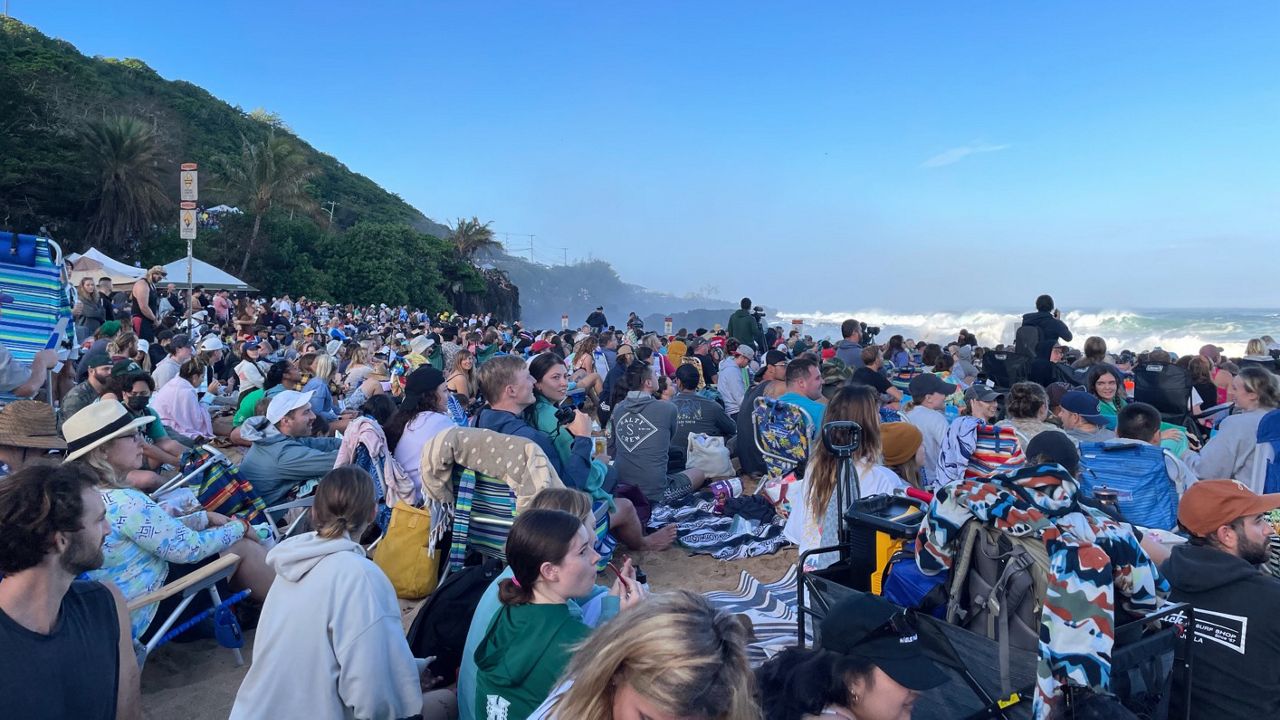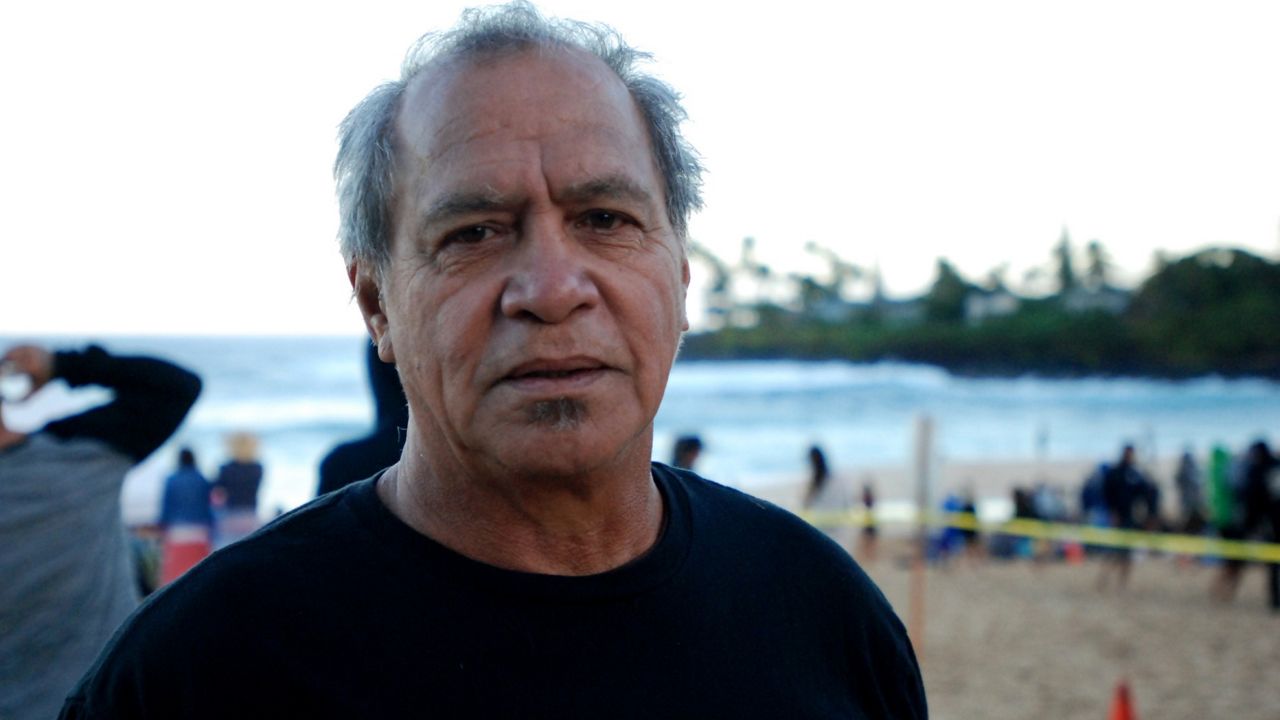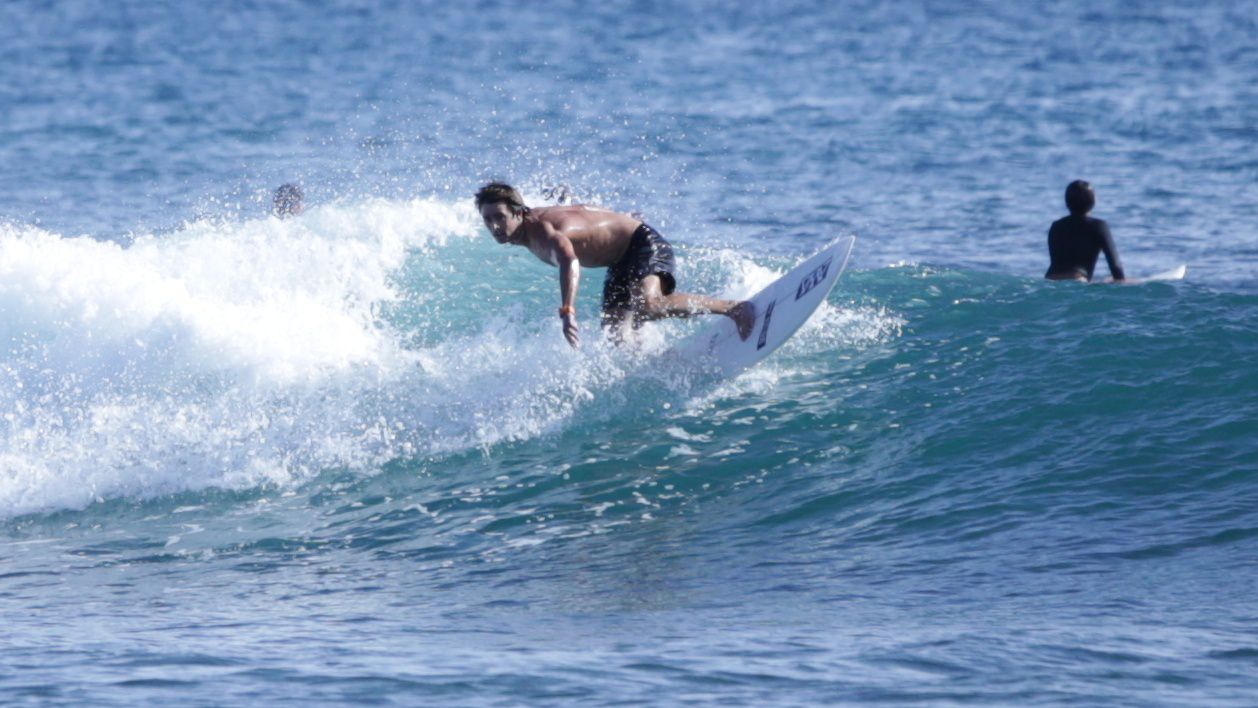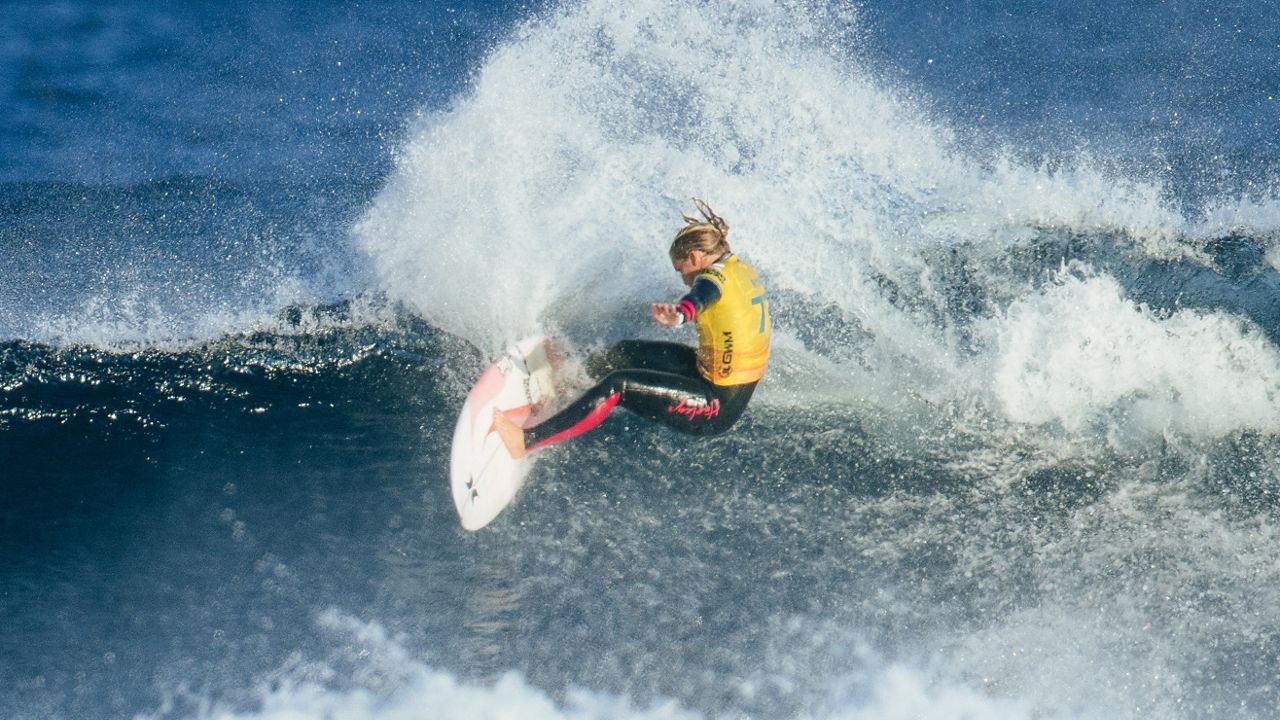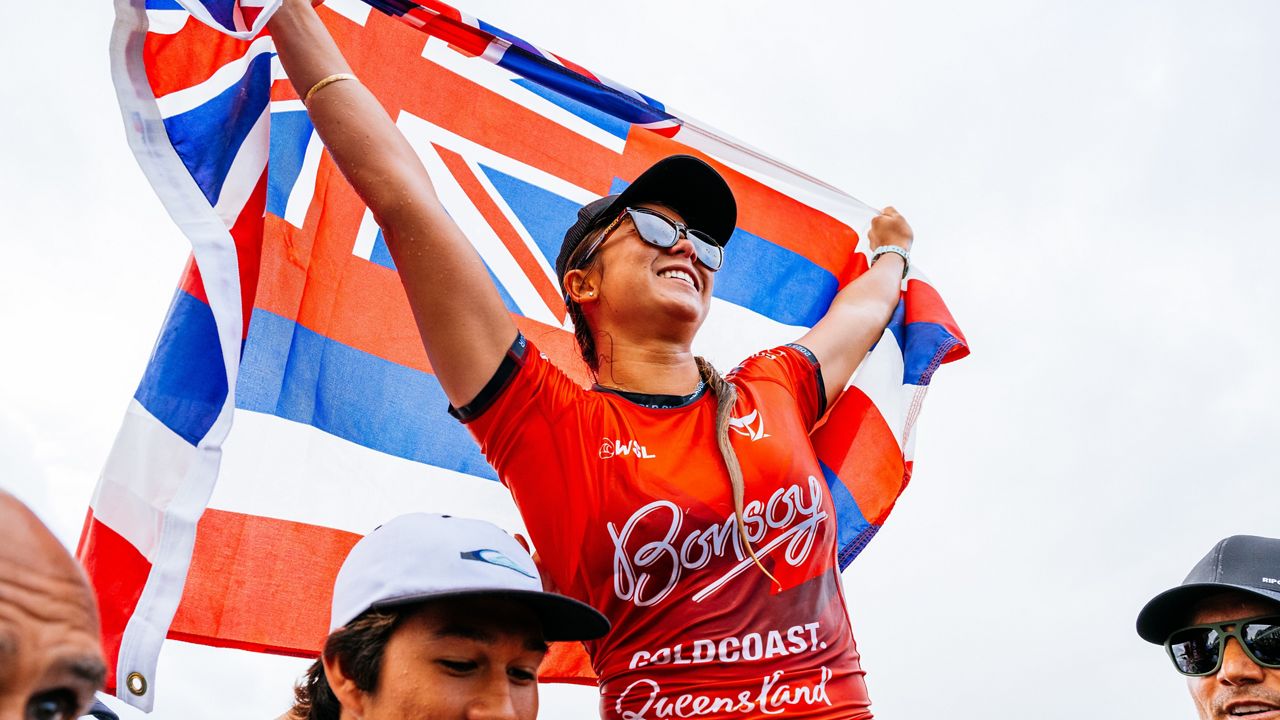WAIMEA BAY, Hawaii — Before the Eddie Aikau Invitational started at 8 a.m. on Sunday morning, tens of thousands of people were making the pilgrimage — by walking, biking and driving — on Kamehameha Highway to head to the iconic event at Waimea Bay. Along the way, budding entrepreneurs were selling cold drinks, musubi and papale (crownless woven hats).
It was the first Eddie held since 2016, as organizers canceled the event during the 2020-2021 season due to COVID-19 and because the conditions must be perfect for the big wave surf contest to be called on. Wave heights had to be at least 20 feet on the Hawaiian scale, which measures waves from the back, between Dec. 14, 2022, through March 23, 2023, for the contest to be a “go” this year.
Luke Shepardson, a Honolulu Ocean Safety lifeguard, won The Eddie Aikau Big Wave Invitational, an event named for a legendary local lifeguard, at Waimea Bay.
The winter swell started crashing against the North Shore’s coastline in the middle of the night, and as the day went on, the waves continued to grow larger. Spectators covered every inch of sand, spilling out onto the road, climbing into the cliffs behind the bay and setting up hammocks in trees to get a look at some of the best surfers in the world charging the massive 25- to 30-foot waves. Only 40 big wave surfers were invited to join this year’s competition.
Along with being special because the event is so rarely held — this was only the 10th time the Eddie had been called on since starting in 1984 — it was a monumental moment for equal opportunities in surfing, as it was the first contest where women were invited. Six female surfers were part of the lineup.
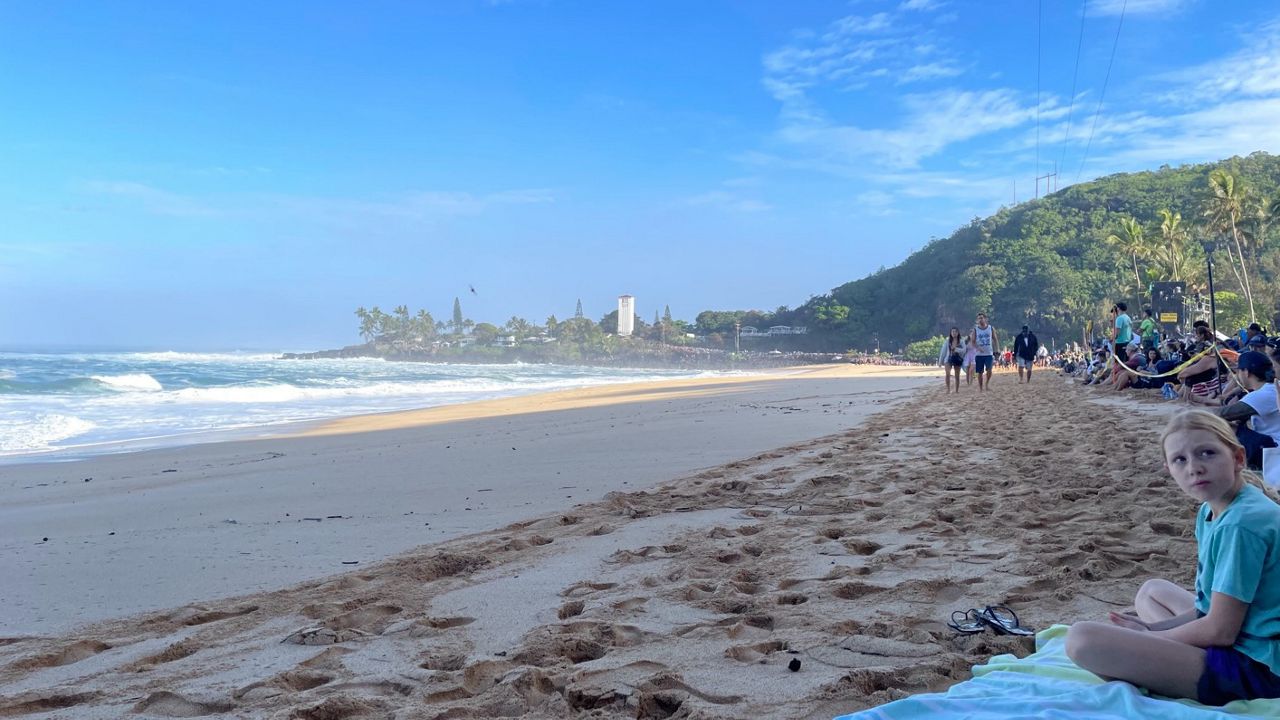
In order to view the surf contest, many people in the enormous crowd had camped overnight.
Nicole Miura, who lives in Mililani, parked at Shark’s Cove — about half a mile from Waimea Bay — and slept overnight in her Honda Pilot with her husband and two kids.
“The girls slept in the back and my husband, and I slept in the front,” said Miura.
Starting at midnight, she said she could hear people walking by their car, making the trek to Waimea Bay, and she just tried her best to sleep through it.
“It was like a party,” said Miura.
She and her family woke up at 5 a.m., started walking to the bay at 6 a.m. and arrived at 6:30 a.m. Unfortunately for her, viewers had already filled the beach, reserving spots to watch the contest with beach towels and folding chairs.
The spot her family set up in was too far back to see the contestants surfing. Also, they had already had to reposition themselves once because they were near a sewer hole city workers opened in order to pump sewage from the park’s restrooms, which had nonstop long lines for both the men and women’s facilities.
However, her husband and one of their daughters had climbed a nearby tree in order to get a better view.
“Hopefully we can see some of the waves. We did see (waves) over at Shark's Cove. The waves were pretty intense over there this morning. So that was pretty neat to see,” said Miura.
Miura said she went to the Eddie in 2011 and 2016, adding that it was important for her to share the experience of seeing the big wave surf contest with her daughters. She said it was her eldest daughter’s second time at the Eddie, having gone in 2016, and it was her younger daughter's first experience. Miura said she hoped they would remember camping overnight and seeing the big wave surf contest as a family tradition.
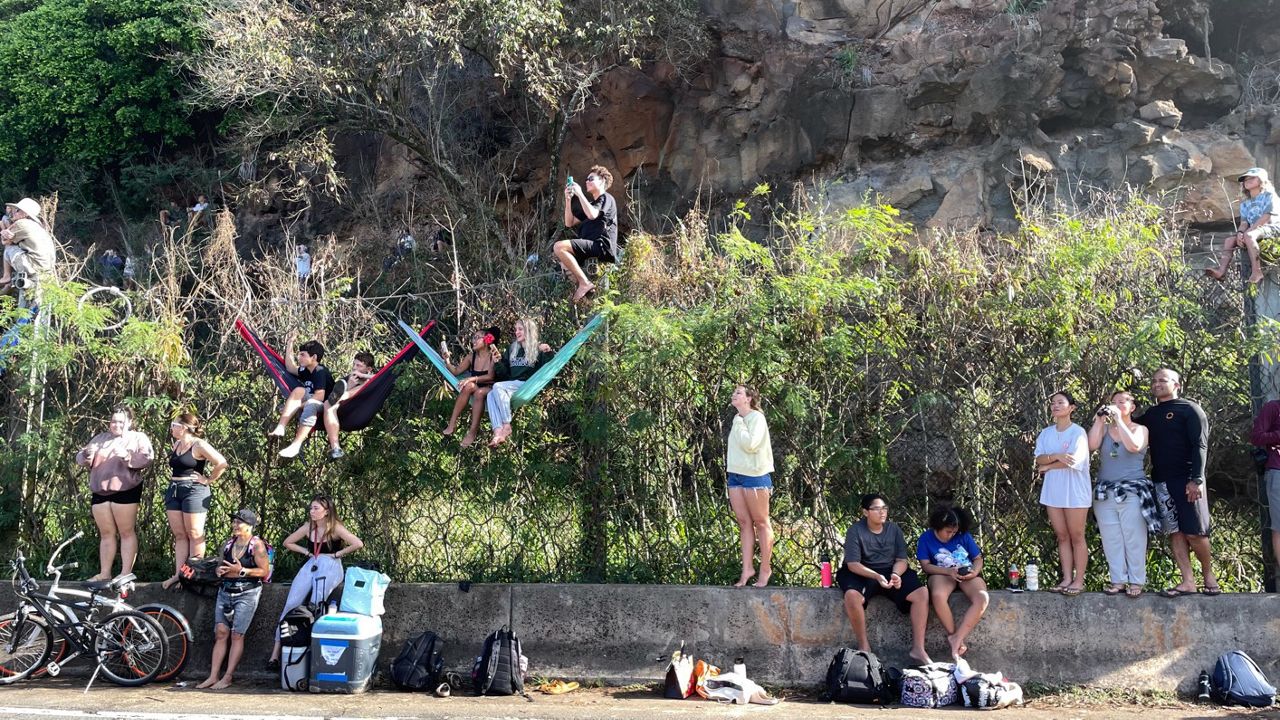
Jeannie Roset, who was with her husband, daughter, son-in-law and grandkids, said she was from Hawaii but now lives in Colorado and had been at the first Eddie in 1984.
On Sunday, her family arrived at 4 a.m., parking at Shark’s Cove and arriving shortly after at the bay to secure their real estate, as she called it. Despite her early arrival, her group was still set back from the action. Luckily, a stranger had invited them to climb on his truck to get a better view, allowing them to see the first rides of the day.
“Just shows you the aloha spirit,” she said.
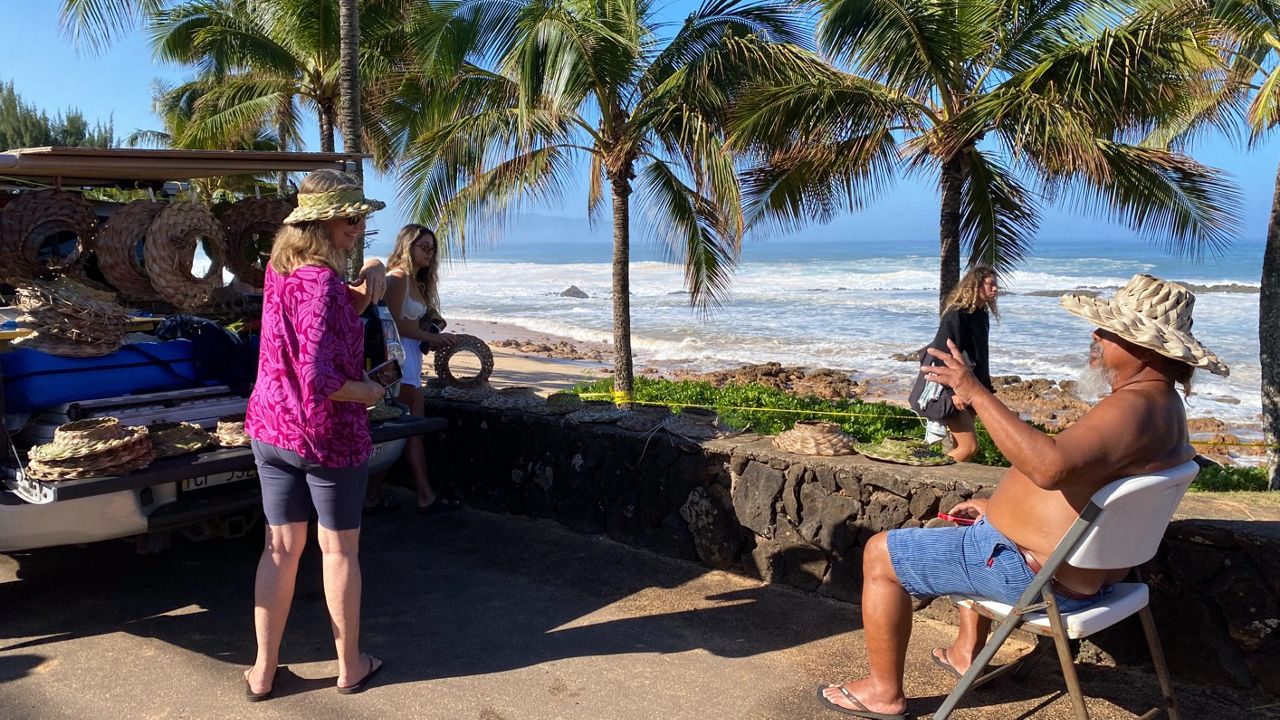
Other people started their journey from Honolulu to Waimea Bay first thing in the morning, hoping to avoid the bumper-to-bumper traffic that later lined the highway.
Sara Manning, who lives near Diamond Head, was situated on a towel with two friends just a few rows behind the caution tape that stopped people from sitting too close to the roaring ocean, giving her a great view of the surfers descending the massive curvatures of the waves.
In order to get her prime viewing spot, she said she had set her alarm for 1:30 am. and almost immediately started the drive to Waimea Bay. She said at the time the traffic was “not too bad,” although there were many cars parked along the side of the road, with people sleeping in them. She parked at a friend’s house who lives in the area and the friend drove her to Waimea Bay at 4 a.m., where she lined up at the locked gate.
“All of a sudden, they yelled ‘it’s open,” Manning said. “So everybody just rushed out here.”
She said people were running to claim spots. One of her two friends laid out a blanket, reserving the spot where they were now watching the contest. After saving their spot, they waited in the pitch black for two hours before the sun rose.
As large sets came into the bay, the water would climb up the sand to where people were sitting.
“Everybody had to keep rushing out because the water kept coming up and the furthest it got was to our blanket,” Manning said.
She said she panicked not from fear the water would sweep her away but from the fear that the mass of people running away from the rising water might trample her.
“I was telling people don’t stampede, don’t rush us,” she said. “So it’s been an eventful morning.”
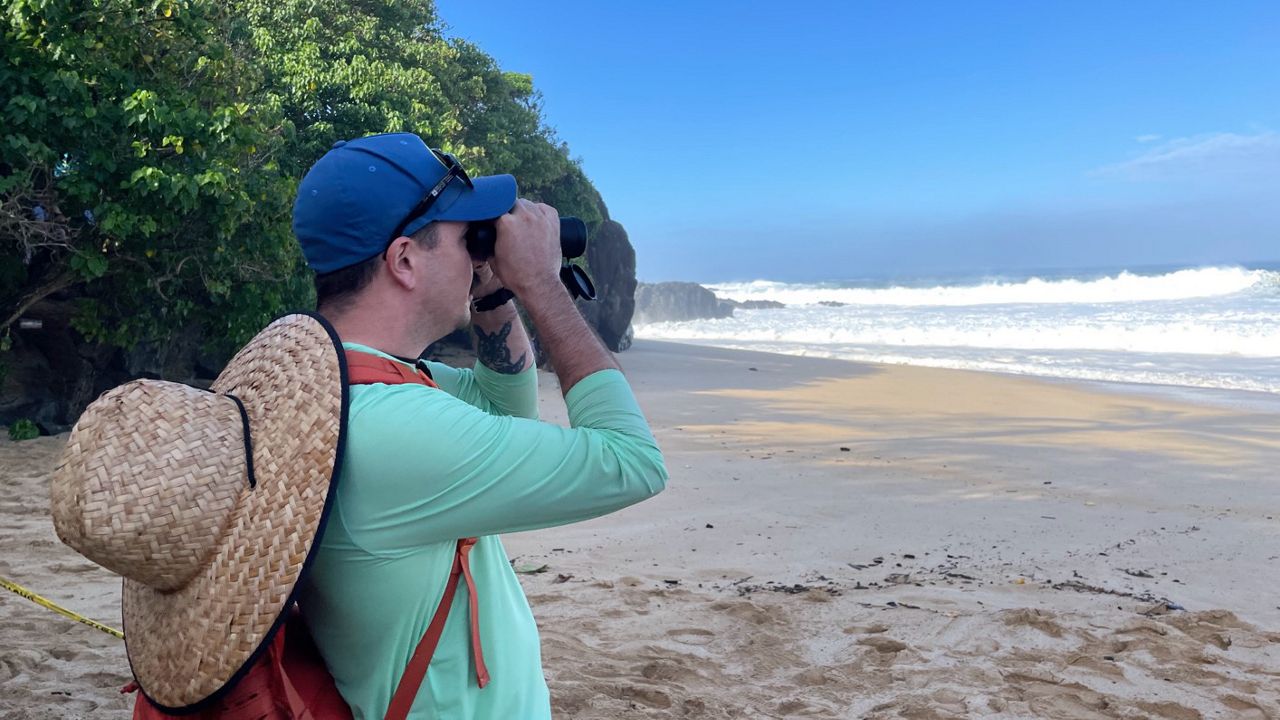
The surges of waves washing ashore were so large and swift that people were lifted up and some of them were even sucked back toward the ocean, requiring help from bystanders.
Rick Todd, who had a pair of binoculars with him, was helping people caught up in the surges find their phones that had slipped out of their hands or pockets and into the ocean but then washed back on shore with the next wave.
“Every fourth or fifth big set, which will be every half hour or so, it'll wash up,” said Todd. “It'll wash all this area out. So it'll come up to a waist to chest height. The last one that came in was over my head.”
After the water receded, the beach was covered with slippers and other footwear that had been swept off of people’s feet. Some people, including this reporter, dashed out to reclaim their lost footwear, before the next set came into the bay.
Michelle Broder Van Dyke covers the Hawaiian Islands for Spectrum News Hawaii. Email her at michelle.brodervandyke@charter.com.
EDITOR'S NOTE: The original story was updated to mention Luke Shepardson's win. (Jan. 22, 2023)




